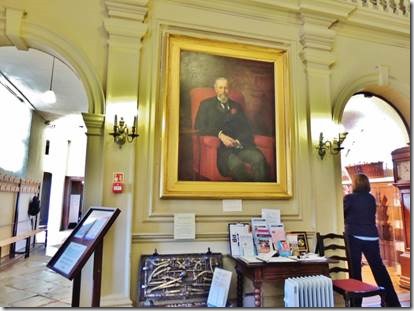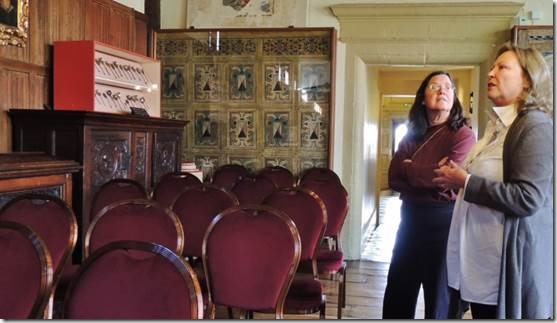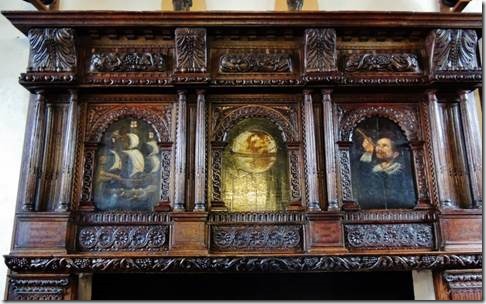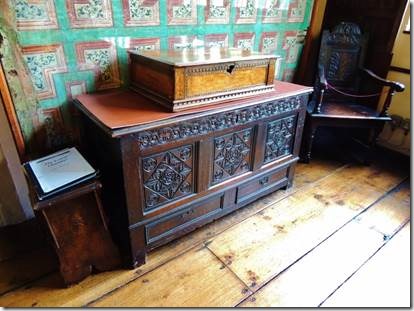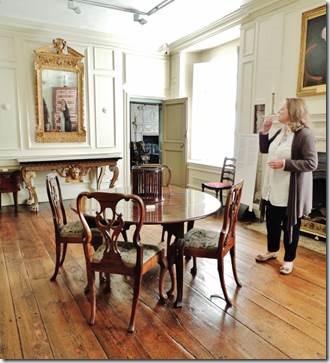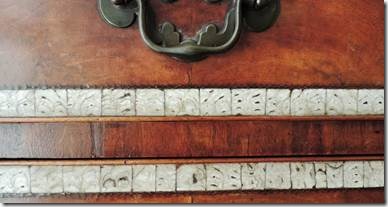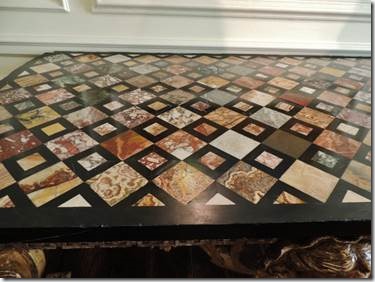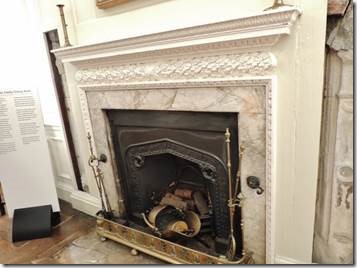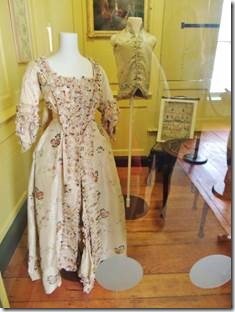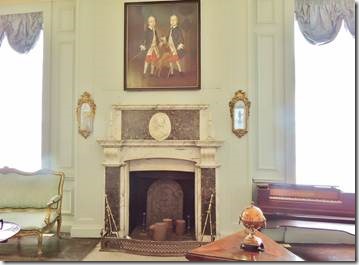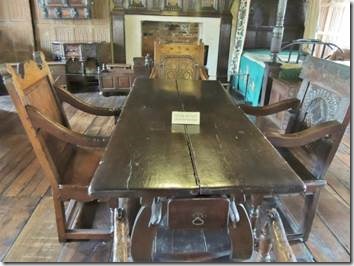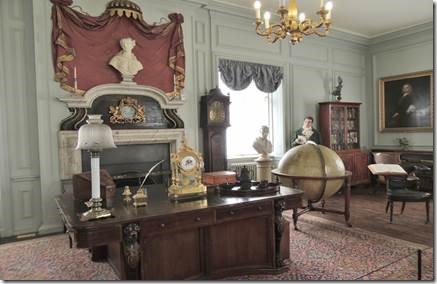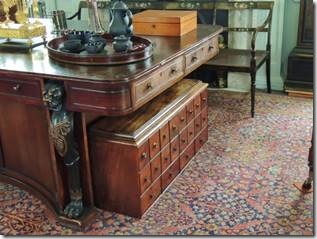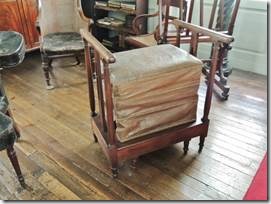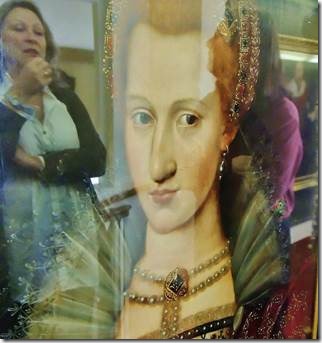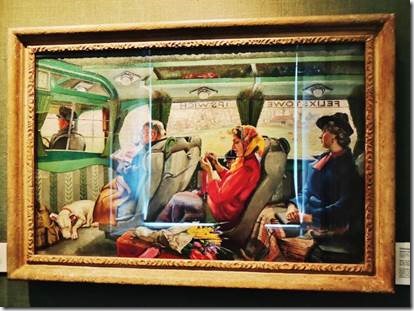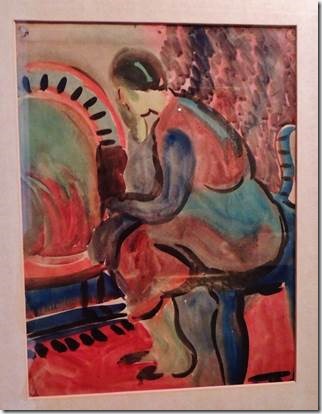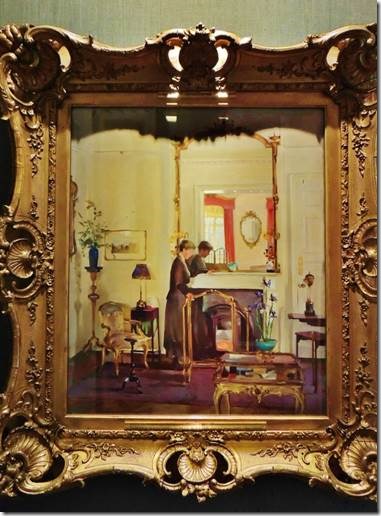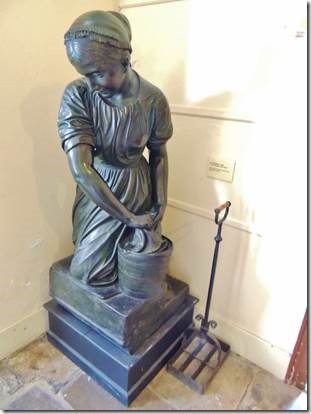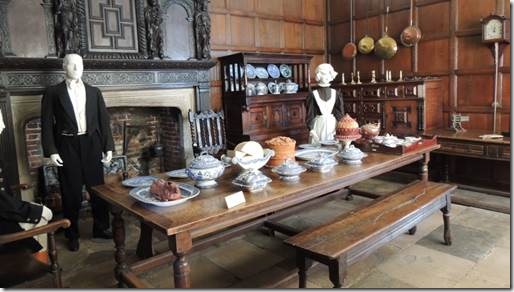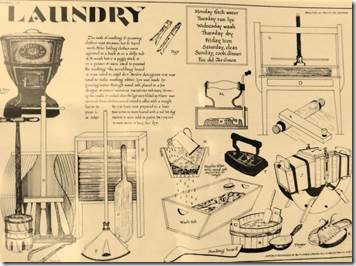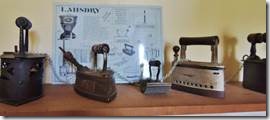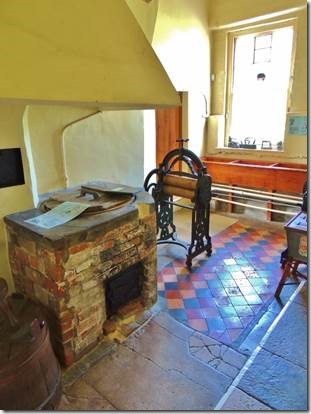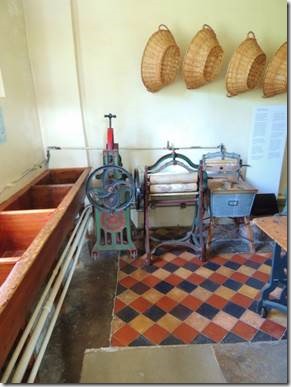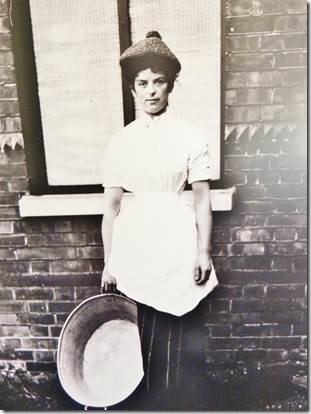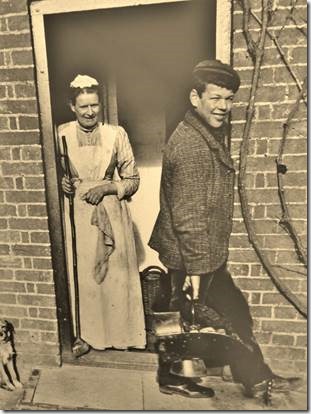Cheers,
Randal and I really are enjoying our time in Ipswich which has passed all too quickly. Ipswich is very walkable and there’s lots to see. We’ve had some interesting folks come look at DoraMac this past week too. But no change in plans; we’re still on our way to the Netherlands May 2nd or 3rd depending on the weather for crossing the North Sea. I’ve taken load of photos but I’m behind in my writing for no good reason. I say that because, with free wifi from the marina, I’ve been watching TV on youtube. I’m now watching Wycliffe, a detective show set in Cornwall. Maybe I just had also needed a “blog break.” But I have all those photos just waiting to be shared so hope to get a few more emails written before we leave Ipswich.
Ru
Christchurch Mansion stories
Mary and I were the only ones on our Christchurch Mansion tour so Erica, our tour guide that morning, was kind enough to spend extra time with us as Mary and I had lots of questions and were obviously enjoying our “private” tour. Tours are offered at no charge twice each day; 11 am and 2 pm. I am assuming they are led by volunteers like Erica who also happens to be the Chairman of the Friends of Ipswich Museums. My second tour of the Mansion was a Sunday afternoon with Randal and Singkey and about 10 other folks. Coincidentally Erica was again the tour guide. I was quite flattered that she remembered me with all of the folks who go through each week.
http://www.foim.org.uk/ is a link to the Friends of the Ipswich Museums. Mary and I also visited the Ipswich Art School Gallery for the wonderful exhibit of Children’s Book Illustrators.
I learned quite a bit during the tour. Here are some of my favorite bits as they explained where some of well used phrases have come from.
|
Felix Cobbold, savior of the Mansion. “In 1892 William Neale Fonnereau put the Mansion and [95 acre]estate up for sale. A property syndicate bought the site in 1894 and sold some of the land for development. Felix Cobbold, a member of the syndicate, presented Christchurch Mansion to the town as a gift and the Ipswich Cooperation purchased the remainder of the Park.” Christchurch Mansion brochure |
|
The recreated “Tudor Room,” the years from 1485 to 1603 that include Henry VIII, and Elizabeth I as well as Shakespeare and Christopher Marlowe. “This chamber and the other directly above are not original to the Mansion, but were reconstructed in 1924 from parts of a house demolished and moved from Majors Corner in Ipswich. The paneling and wall paintings here and in the upstairs room came from various merchants’ houses in Ipswich and the surrounding area.” Christchurch Mansion brochure Erica told us that the more wood paneling and the more intricately it was carved, the wealthier the home owner. But as well as showing off wealth, it acted as an insulator to keep in the heat. I found ti much too dark and heavy looking. Mary and Erica |
|
Thomas Eldred : Circumnavigator “Above the fireplace is the Eldred overmantle which came from the house of Thomas Eldred in Fore Street in Ipswich. It celebrates his exploits as navigator on Thomas Cavendish’s voyage around the world in 1586/88. The three panels show Thomas Eldred’s portrait, a ship (thought to be his vessel, Desire) and a globe of the world.” Christchurch Mansion brochure. I took note of this as we’ve been cruising with an engine for 7 years and haven’t made it around the world and they did it under sail in 2 years. Of course their goal was plunder the locals and ours was to actually live with the locals. http://www.nps.gov/fora/forteachers/thomas-cavendish.htm is the National Park Service description of Cavendish’s connection to the colony on Roanoke Island North Carolina. |
|
Chest of Drawers with a “wall painting” in its faded glory (now protected by glass.) Erica told us how “the chest” transitioned into a “chest of drawers” and pointed to this as an early example. As I don’t take notes during our travels I have to research to write up these emails. This would have definitely been easier with some of the Reference books back in the Roanoke County Public Library’s collection. The Dictionary of Phrase and Fable and the Nutting History of Furniture both would have been really useful. As it is I’m just relying on Wikipedia and whatever else I can find for free on the Internet. I guess I could walk the mile or so to the Ipswich Library, but I think seeing this chest with its two drawers pretty much tells the story itself. Erica pointed out that it was probably easier to find things in drawers than having to go through an entire chest which prompted the addition of drawers. “In late medieval Europe the chest came into widespread use, especially in homes of the nobility. This type, also known as a coffer was more or less a simple joined wooden box with a hinged lid. It may or may not have stood on feet. An early transitional phase was the installation of one drawer beneath this main compartment. A number of early pieces from the seventeenth century are extant of oak manufacture from England, and corresponding seventeenth century pieces of French walnut have survived. Some of the early surviving English specimens are from the Charles I period. Nutting ascribes the earliest piece in his Furniture Treasury to "before 1649". http://en.wikipedia.org/wiki/Chest_of_drawers “The addition of a wide drawer fitted below the well of the chest created the form of a blanket chest, a form that is still familiar today. ….. During the Queen Anne period, this basic form continued to change as more drawers were inserted into runners that became part of the structure of the interior of the chest. The drawers filled the well of the chest, making it necessary to change the lid into a fixed top. When the form received this addition of drawers, it was labeled literally as a chest of drawers (fig. 3). Also common were the terms nest of drawers (1742) or case of drawers (1695), the former reserved for chests with many small drawers and the latter stemming from the construction of the piece from a case filled with drawers from top to bottom.” http://www.waywordradio.org/Chester_Drawers.pdf Which then led to the expression “Top Drawer.” “Top Drawer : The ‘drawer’ in question here is the highest drawer of a bedroom chest of drawers. This was where Victorian gentry kept their most valuable items – jewelry, best clothes etc. The phrase ‘top-drawer’ was initially used to denote a person’s level of social standing, based on their family background. Families were either ‘top-drawer’ or they weren’t. The earliest citation of the phrase that I can find comes from the English writer Horace Vachell, in the novel The hill, a romance of friendship, 1905: "You’ll find plenty of fellows abusing Harrow," he said quietly; "but take it from me, that the fault lies not in Harrow, but in them. Such boys, as a rule, do not come out of the top drawer." http://www.phrases.org.uk/meanings/top-drawer.html “‘The Tudor painters/decorators would most likely have executed their design freehand’ adds Dant. ‘They would freely mix available pigments with soot, sheep piss and earth into the casein to bind their designs which would include forms recognisable in the local landscape (plants, birds, fruits etc). So I used plants from the Upton Cressett garden as the basis for the cursive and fluid designs on faux panelling low on the wall by the mullion window’.” http://www.uptoncressetthall.co.uk/the-hall/ |
|
Another Erica Story… This is the Fonnereau dining room from the mid-18th century. Each owner and each generation changed the house to suit their needs. During my second tour all of a sudden Erica gasped and gently but firmly took the wood plate carrier from the hands of an elderly lady and placed it back in the center of the table just behind the “please don’t touch” sign. I much prefer these light walls especially with the beautiful wood floors. There were lots of Fonnereau portraits hanging on the walls. Erica told us that the original Fonnereau, Claude had bought the place as a base in Suffolk for his son Thomas to enter politics. |
|
We were asked to guess what the white inlay was made from… horses’ teeth! |
|
One member of the Fonnereau family had collected these tiles on his travels and had them made into a table. I think Randal collected enough tiles on his ‘round the world bicycle trip to do the same thing. |
|
Each generation changed the fireplace in the dining room to reflect innovation and fashion. The original was larger as indicated by the empty spaces either side of the fireplace that exists now. I think the mantle, the marble and the inside iron were all changes made over the years. |
|
Clothing stories with connections to London’s East End and Jamestown, VA. The gown is woven, not embroidered, from Huguenot silk possibly from Spitalfields which is part of London’s east end and quite familiar to Randal and me from our “Jewish East End” tour and our “Alternative Art” walking tour. Claude Fonnereau, a wealthy London merchant of Huguenot descent, bought Christchurch Mansion in 1732 from the Devereux family who had inherited it by marriage from the Wythypoll family. Building of the original Mansion had been begun in 1547. Fire, the changes in taste, and innovations have impacted the original structure resulting in the present building. What I remember about the painting of the twins are two things: 1. They are related to Bartholomew Gosnold, the founder of Jamestown, VA. And Jamestown is very BIG here in Ipswich. Erica gleefully pointed out to us that had not Gosnold gone to America Randal and I might be speaking French or Spanish. (Of course some Brits tell us we don’t speak English at all, so there you have it.) both links are to stories about Gosnold, Ipswich and the founding of Jamestown. 2. The term breeched. This painting shows them wearing “breeches” for the first time and the term for that was “breeched.” Upper-class boys, until the age of 5, were dressed more like girls with flowing open clothing. Easier for changing diapers. “Regardless of social standing, all boys, even those from the lower sorts, would receive a new pair of breeches around the age of six (four to six, to be more precise). The breeching event provided a cause for private celebration, to which family and friends were invited. For the parents, this ceremony also acknowledged that their child had survived past infancy. In an age when so many children died before reaching their majority (almost a fourth of them would die before the age of 10), the breeching ceremony might well have been the only significant event in a young boy’s life. In addition, he received a set of brand new clothes – a milestone indeed!” http://janeaustensworld.wordpress.com/ gives a good history of boys’ clothing. |
|
The board and chair. This was another room decorated for Tudor times. One of the pieces of furniture was this lovely wood table; the board. Erica explained that chairs were so expensive that only the head of the house would have a chair and everyone else sat on whatever was available. So the father was the “chairman” when they sat at “the board.” = chairman of the board. The chairs around this table were only examples of Tudor chairs rather than a real example of a Tudor home. Notice the bed in the corner with the blue blanket. At this time the main floor of a house consisted of one room where the homeowner and spouse slept. I’m guessing there was a loft area or some other space for the kids to sleep. Erica said the servant slept at the foot of the bed or across the doorway. |
|
Grog : Admiral Edward Vernon “The village of Nacton is dominated by the estates of Broke Hall, built by Sir Broke in 1526 and Orwell Park the seat of Admiral Vernon who introduced the word grog into the English language. Admiral Edward Vernon was nicknamed “Old Grog” because in bad weather he wore a cloak made of grogham, a coarse material stiffened with gum. It was he who introduced the issue of rum diluted with water into the Royal Navy in 1740 and which universally became known as grog. The navigation buoy adjacent to this point in the river is named Grog Buoy to honour this connection. “ http://www.manderton.co.uk/starwalk/nacton.htm http://www.bbc.co.uk/ show a portrait of Admiral Vernon. I can’t remember if we actually saw the portrait but it is owned by a museum in Ipswich or Colchester…so we very well could have seen it. I just remember the story. |
|
The partners’ desk in the Fonnereau “library.” This huge room was the office/library for Mr. Fonnereau. I loved the open space and wood floors and carpets and windows and the huge desk. The globes were not original to the house but were used recently by a local professor to give talks about the earth and solar system represented by a globe not shown. “A partners desk, partner’s desk or partners’ desk (also double desk) is an antique desk form, which is basically two pedestal desks constructed from the start as one large desk joined at the front, for two users working while facing each other. This piece of furniture was first conceived in the United Kingdom to accommodate the work of banking partners. These gentlemen were usually senior bank officials who wished to work together while keeping the convenience and the prestige of a pedestal desk. It was an adaptation of the earlier and sometimes larger library desk, found in the libraries of the mansions of the gentry and the nobility. Most partners desks made in the 19th century were built of high quality woods such as oak, mahogany or walnut and finished with tooled leather inserts on top and brass fittings all around. Many reproductions have been made in the 20th century.” |
|
Drawers for “stuff” and a pretend horse for indoor exercise that one could use when the weather was bad. You would sit astride and bounce! |
|
The three ladies…Queen Anne of Denmark, Erica and Mary.. Pocahontas during her visit to England was introduced to Queen Anne. Another Jamestown references…. Though I can’t remember why a portrait of Queen Anne was hanging in Christchurch Mansion. I think it was just part of a “portraits” exhibition most of the examples being people connected to Suffolk where Ipswich is located. |
|
The Mansion also exhibits contemporary artists connected with Suffolk and Ipswich. These are my favorites. Felixstowe to Ipswich Coach by Russell Sidney Reeve c 1939 Girl Sitting by a Fire by Kathleen Walne 1930s Interior with Mrs Charles Burnand by Anna Airy 1919 The Housemaid by Thomas Woolner 1892 Plaster cast of an original sculpture with bronze patina coating R 1930-12 |
|
Downstairs…… where the staff ate and worked “There is evidence that this room was used as a Servants Hall in the late 19th century. At that time servants would have eaten their meals and consumed their ale allowance here. In a Victorian household the butler would have trained the junior staff to wait on table by practising on their fellow servants before being allowed to wait on the family. The overmantle (which unfortunately you can’t see very well in this photo) is particulary fine and has four carved figures: Faith with the cross, Hope with an anchor, Charity caring for a child and lastly Vanity holding a mirror and serpent.” Christchurch Mansion brochure. |
|
Fireplace for heating water and wringers for wringing and irons for ironing! |

